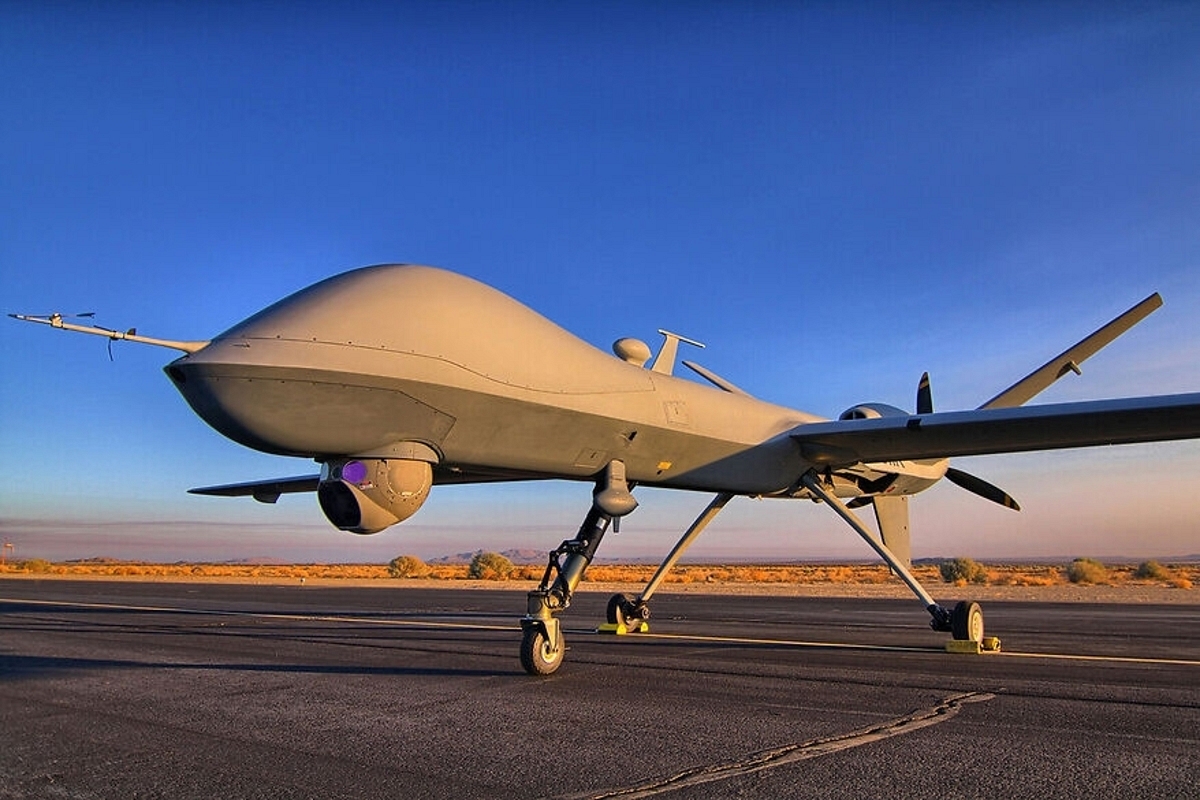Defence
With Indigenous UAV Development Programme In Full Swing, India Reduces US-Made MQ-9 Predator UCAV Requirement To 18 From 30

General Atomics Predator B High Altitude Long Endurance (HALE) Drone.
The Indian Armed Forces has reduced the requirements of US-made MQ-9B Reaper High Altitude Long Endurance (HALE) drones from the earlier 30 to 18, reported Hindustan Times.
According to the report, after a detailed Research System Analysis (ORSA), the Armed forces brought down the requirements to 18, and each force, the IAF, Army and Navy will receive six airframes.
The deal will be done under the government-to-government (G2G) route with the US government. Earlier, it was reported that the deal might get signed when Prime Minister Narendra Modi visits the US in early June or July 2023.
Meanwhile, the Defence Research and Development Organisation's lab, Aeronautical Development Establishment (ADE), is currently working on various Made in India UAV programs. The development of all these Unmanned Aerial Vehicle (UAV) programmes is in full swing.
The Tapas BH-01 or Rustom-1 Medium-Altitude Long-Endurance (MALE) is one such program. The UAV took its first flight in 2016, and was shown to the public on the sidelines of Aero India 2023 held at Bengluru in February 2023.
Tapas BH is capable of operating at altitudes up to 28,000 feet, with an endurance of 18 plus hours.
Another UAV under development is Archer NG, which is an armed UAV and is capable of operating up to an altitude of 30,000 feet. The platform is reported of have an endurance of up to 18 hours, which means it can remain in air for that duration.
It is capable of carrying 300 kg of weaponry.
The MQ-9A, on the other hand, is a turboprop-powered, multi-mission RPA developed and first flown by General Atomics in 2001. It offers unmatched operational flexibility with a 27-hour endurance and speeds of 240 Knots True Airspeed (KTAS). Additionally, it has the ability to operate at altitudes up to 50,000 feet.
It has a payload capacity of 3,850 pounds, including 3,000 pounds of external stores.
The Indian Navy already operates two MQ-9 drones on lease on a Company-Owned, Company-Operated (COCO) model. The Indian Navy received these drones in November 2020, at the peak of the standoff with China along the Line of Actual Control (LAC).
Some reports say that the Navy is highly impressed with the capabilities of the drone, so much so that the two MQ-9s completed 10,000 hours of flying in just two years.
Even the Indian Army utilized the drone's real-time imagery capabilities along the LAC when the Navy’s drones were deployed along the LAC to keep an eye on Chinese deployment.
The deal could also include a significant Make-In-India component in line with the government’s strategy of Aatma Nirbharta.
Just early last month General Atomics signed a partnership with Bharat Forge, to manufacture main landing gear components, sub-assemblies and assemblies of MQ-9.
This partnership will help India to develop a drone manufacturing ecosystem in the country.
Support Swarajya's 50 Ground Reports Project & Sponsor A Story
Every general election Swarajya does a 50 ground reports project.
Aimed only at serious readers and those who appreciate the nuances of political undercurrents, the project provides a sense of India's electoral landscape. As you know, these reports are produced after considerable investment of travel, time and effort on the ground.
This time too we've kicked off the project in style and have covered over 30 constituencies already. If you're someone who appreciates such work and have enjoyed our coverage please consider sponsoring a ground report for just Rs 2999 to Rs 19,999 - it goes a long way in helping us produce more quality reportage.
You can also back this project by becoming a subscriber for as little as Rs 999 - so do click on this links and choose a plan that suits you and back us.
Click below to contribute.
Latest